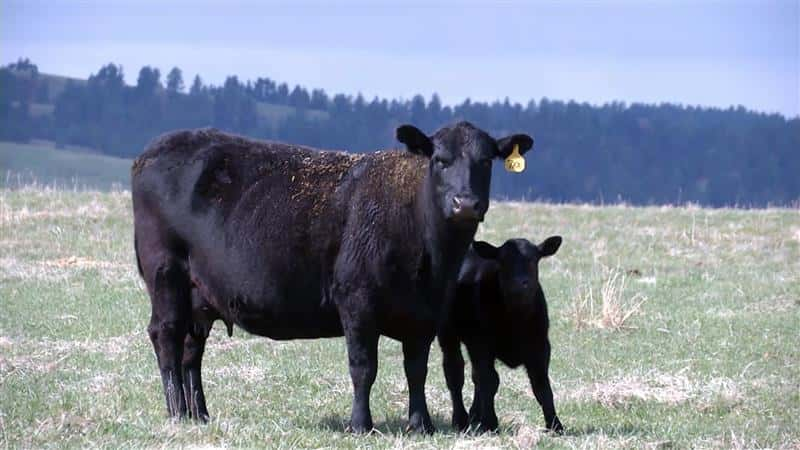Congress authorized $9.5 billion for livestock and specialty crop producers and local foods systems through the Coronavirus Aid, Relief and Economic Security (CARES) Act, but tasked the U.S. Department of Agriculture (USDA) with designing how the funding will be allocated.
With the help of a specially appointed Livestock Relief Subcommittee comprised of state beef industry leaders, the North Dakota Stockmen’s Association (NDSA), which represents approximately 3,000 cattle-ranching families, established a set of foundational principles for USDA and other program crafters to consider in developing a meaningful and equitable distribution mechanism that helps address the severe impact the COVID-19 pandemic has had and will continue to have on the cattle industry.
“North Dakota cattle ranchers play an important role in helping ensure our nation’s food security and they have been hit hard through this crisis,” said NDSA President Dan Rorvig, who ranches with his family near McVille, N.D. “Our aim is to help guide decision-makers as they develop the CARES Act relief program and get some relief into producers’ hands during this critical time.”
The NDSA’s recommendations include the following:
- The cattle industry should have special consideration as funding is allocated across agricultural industries. As the largest segment of the U.S. agriculture industry, U.S. cattle production accounts for $67 billion (18 percent) of the $371 billion in total cash receipts from agricultural commodities. It has a presence in each of the nation’s 50 states on 729,046 operations and in each of North Dakota’s 53 counties on 8,245 operations. Additionally, cattle producers are not eligible for traditional safety net programs.
- Cow-calf and seedstock producers, stockers, backgrounders and feeders have all been impacted by the pandemic. The NDSA believes assistance must be delivered equitably across all producer segments of the cattle supply chain where there is demonstrated loss and financial need. Business size and structure are not reliable determinants of financial need or viability and should not be a prohibiting factor for eligibility. The packing segment of the cattle industry has not suffered a loss due to the pandemic, and the NDSA is firmly opposed to any relief funding being distributed to this segment.
- Economic assistance for cattle producers should prioritize need and not disrupt or mask market signals or be a subsidy program that stimulates overproduction or underwrites inefficient and unprofitable operations.
- The Congressional intent of the CARES Act is to get relief into the hands of producers quickly. In order to accomplish that, to support an already inundated Farm Service Agency network that likely will be tasked with administering the program and to not overburden livestock producers who are in the midst of calving and will soon be branding, breeding and turning cattle out to pasture, the NDSA believes the program should be as simple as possible and based on the inventory of three classes of cattle: cows, feeder cattle and fed cattle. It is the NDSA’s intention that newly born calves (399 pounds and less) not be counted as feeder cattle. (This weight break matches with other USDA programs.)
- The NDSA proposes a one-time, per-head payment based on qualifying producers’/feeders’ inventories as of Feb. 21. That was when U.S. cattle markets began to sharply decline after additional COVID-19 diagnoses and with the advent of social distancing rules and business closures. The NDSA believes that payments should be based on past inventories, not future ones, to avoid influencing producer marketing decisions and creating artificial market impacts. For example, let’s say that a producer, on Feb. 21, had 175 cows and 175 2019-born feeder cattle. His payment would be based on 175 x the per-head payment for cows + 175 x the per-head payment for feeder cattle.
- The pandemic has sent the cattle market in a nosedive. Losses in the U.S. cattle industry continue to mount. Some of those losses have already been realized and other very substantial losses are still looming. Early – and already very much outdated – projections have estimated the combined cattle industry damage to be more than $9.44 billion. The cow-calf industry is the foundation of the entire industry. The NDSA believes that, long term, it will suffer the longest residual impact of the COVID-19 crisis and, therefore, must be at the heart of the relief program. The NDSA suggests USDA consider a $150-per-head payment based on the applicants’ respective inventories as of Feb. 21.
- The NDSA recognizes that there is a finite pool of relief funds available and multiple commodities that will be sharing in the pool. As such, it supports a reasonable cap of $250,000 on the livestock relief support payment to an individual producer. This will also help assure that the dollars are spread across the cattle industry.
- The U.S. cattle industry and entire economy have been severely damaged by the COVID-19 pandemic. The NDSA firmly believes that relief should be earmarked for U.S. citizens and not flow to anyone from outside the country.
The NDSA has pitched its ideas to the North Dakota Congressional delegation, USDA officials and other state and national ag leaders. Rorvig said the organization will continue to work with them and others as the program is rolled out.
The NDSA’s Livestock Relief Subcommittee was comprised of the following members: Brian Amundson, Jamestown, N.D., cow-calf producer and feeder; Chad Ellingson, St. Anthony, N.D., cow-calf and seedstock producer; Tim Erbele, Streeter, N.D., cow-calf producer and feeder; Jamie Hauge, Carson, N.D., cow-calf and seedstock producer and feeder; Melvin Leland, Sidney, Mont., cow-calf and seedstock producer; Will MacDonald, Bismarck, N.D., cow-calf and seedstock producer and feeder; Tim Petry, Fargo, N.D., North Dakota State University livestock economist; Dan Rorvig, McVille, N.D., cow-calf producer; Jeff Schafer, New Rockford, N.D., cow-calf producer and feeder; Larry Schnell, Dickinson, N.D., livestock auction market owner and operator; Jason Schmidt, Medina, N.D., cow-calf producer and feeder; Roger Stuber, Bowman, N.D., cow-calf and seedstock producer; and Warren Zenker, Gackle, N.D., cow-calf producer and feeder.
#
North Dakota Stockmen’s Association



Do you have a link to where cattle producers can apply for economic relief?